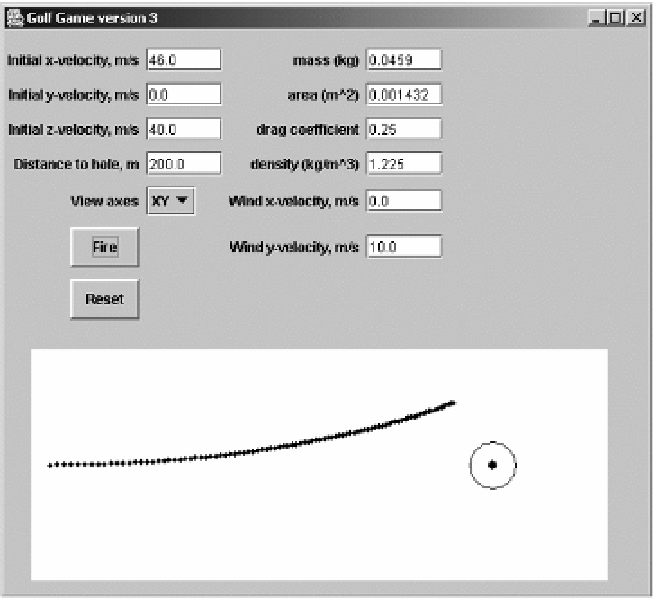Game Development Reference
In-Depth Information
Figure 5-13.
The effect of crosswind on golf ball flight
Summary: Adding Wind Effects to the Projectile
Trajectory Model
Adding wind effects to the projectile trajectory model required changing the way the drag force
components were evaluated. To account for the effects of wind, the apparent velocities, rather
than the translational velocities, were used to evaluate the drag force and accelerations in the
x-, y-, and z-directions. The apparent velocities were the vector difference of the translational
and wind velocities. There were some assumptions made for this model—namely that the drag
coefficient and characteristic area were the same as they would be if no wind was present.
Here are a couple of key points about the wind model that we implemented in this section:
•
The presence of wind changes the apparent velocity seen by the projectile in flight.
A headwind will increase the apparent velocity. A tailwind will decrease it.
•
The wind velocity affects the drag force in all three coordinate directions even if the wind
velocities themselves are only in the x- and z-planes.
Spin Effects
The final subject we will cover with regards to projectile trajectory modeling concerns the
effects of spin. It is quite common for projectiles to spin as they fly through the air. A bullet
spins as it leaves the gun. A golf ball spins after impact with the golf club face. A spinning object
does a very curious thing as it travels through the air—it generates a force perpendicular to the
flow velocity and spin axis.

